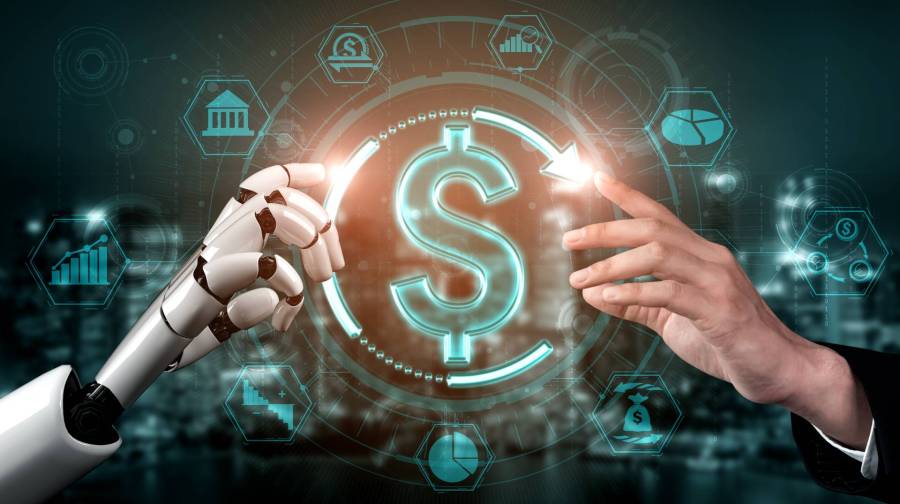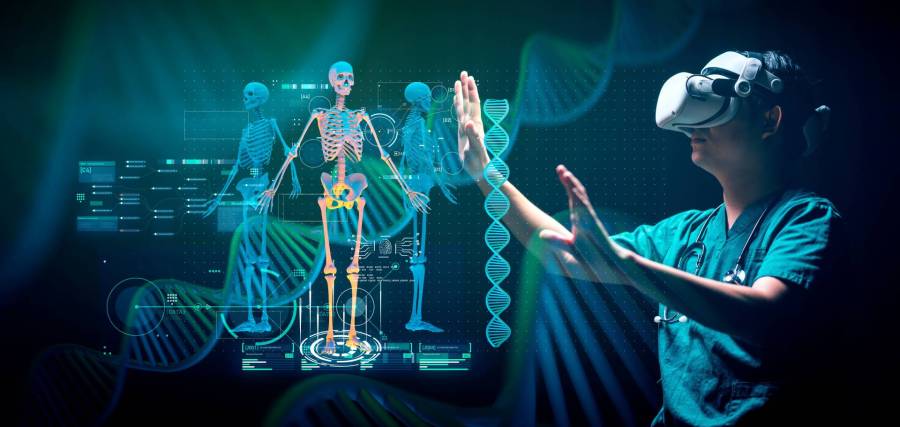Emotional intelligence isn’t just a buzzword; it’s a fundamental characteristic of human interaction. It’s our ability to understand, manage, and empathize with our emotions and those of others. But how do we measure this intangible trait? Traditionally, EQ was assessed through questionnaires and behavioral observations.
However, with AI stepping into the game, we now have ingenious ways to gauge emotional intelligence. Imagine taking a test that analyzes your responses and interprets your facial expressions, vocal tones, and body language – thanks to AI technologies.
AI is being trained, and massive bucks are invested to popularize and power AI in various ways. This mixed model approach provides deeper insights into our emotional tendencies and manipulative human behavior.
AI Technologies Beyond Text
AI is no longer confined to just processing text; it’s evolving to grasp the complexities of human expression. Natural language processing (NLP), machine learning (ML), and machine vision are now used to examine emotions from various sources like voice and video.
It is hard to believe, but yes, AI can go beyond analyzing the words we type. It can now detect emotional nuances in the tone of our voices, the movement of our facial muscles, and even our gait.
These technologies open doors to a more profound understanding of how emotions manifest in different situations and cultures. With AI going beyond text, it’s becoming more capable of reading between the lines and deciphering unspoken emotions and feelings.
Analyzing Micro-Expressions and Subtle Cues with AI
Ever heard of micro-expressions? These tiny facial movements that last only milliseconds can reveal volumes about our genuine emotions. It’s like decoding a secret emotional Morse code! With AI’s prowess in analyzing these micro-expressions, we’re delving more in-depth into emotions.
AI can identify fleeting smiles, suppressed frowns, or hidden surprises that even the most skilled human eye might miss. Not just that, AI also picks up on subtle cues from our body language and tone of voice.
Imagine an AI that can perceive your unspoken emotions and help you better understand yourself and others. It’s like having a digital emotional intelligence coach by your side. Isn’t it cool?
Applications of AI-Driven Emotional Intelligence in Businesses
Emotional intelligence isn’t just for self-awareness; it’s a game-changer for businesses, too! With AI and emotional intelligence binding forces, the corporate world has a wealth of possibilities.
For example, the Recruitment processes are upgrading with AI-powered EQ assessments identifying candidates with superior emotional intelligence. This means teams with stronger emotional bonds and a healthier workplace culture.
Organizational communication can also improve as AI examines patterns, offering suggestions to enhance team dynamics. And let’s not forget customer service – AI-driven chatbots and virtual assistants can now sympathize with customers, leading to personalized and delightful experiences. Emotionally intelligent businesses are enhancing user experience and shaping the future.
The Future of AI and Emotional Intelligence
Hold on to your emotions – the future is exciting! As AI continuously advances, integrating AI and emotional intelligence will redefine how we interact with technology and each other. Emotion recognition will become more sophisticated, enabling AI to adapt seamlessly to our emotional needs.
Imagine AI companions that understand and respond to your feelings, providing comfort during tough times or celebrating with you in moments of joy. Not just for personal use, emotional AI will profoundly impact mental health, education, and even therapy. Get ready for a future where AI becomes not just intelligent — but emotionally shrewd.
Advantages of Emotion AI in Various Industries
Emotion AI isn’t just another tech gimmick; it’s a powerful tool transforming industries across the board! In marketing, sentiment analysis helps brands understand customer reactions to their products and tailor offerings accordingly.
Just think of knowing precisely what your customers feel about that quirky new product you launched – it’s like having a mood ring for your brand!
Finance isn’t left behind, either. Emotion AI can predict stock movements by reading market sentiment. It will be your financial advisor who can read the market and propose the best strategy.

In healthcare, emotion AI shows promise in diagnosing conditions like depression by examining speech patterns. It’s as if your doctor can now tune in to your emotional well-being just by listening to you! Emotion AI is nothing short of a miracle revolutionizing industries, making them more emotionally intelligent than ever.
Disadvantages and Ethical Concerns of Emotion AI
As AI delves into our emotions, it’s not all rainbows and unicorns. There are concerns we can’t sweep under the digital rug.
It’s all fun and cool until AI mistakes your joy for frustration – oops, that could lead to some awkward interactions! Plus, there’s the whole issue of biases. AI can pick up biases from the data it’s trained on, leading to unfair judgments based on race, gender, or culture. After all, a machine is a machine.
And let’s not forget privacy. AI requires personal data, raising eyebrows about how it’s used. It’s like allowing AI to read your emotional diary – who knows where that information ends up! We must stride carefully as we navigate the ethical waters of emotional AI.
Types of Emotion AI: Text, Voice, and Video Analysis
AI is trained to be a multi-talented performer with skills in three main categories — text, voice, and video analysis.
Text emotion AI dives into written words, reckoning sentiments in online comments or news stories. It’s a mood detector for the digital world.
Voice emotion AI, on the other hand, takes center stage when learning human speech. Have you ever thought your virtual assistant could understand if you’re having a good or bad day just by the tone of your voice? Now it can.
However, the show’s real star is the video and multimodal emotion AI. This superstar processes everything from eye movements to body language, making it the ultimate emotional Sherlock Holmes. Together, they form a power-packed trio, exploring emotions in diverse ways.
Will AI be Able to Think Like Humans?
It remains an age-old question – will AI be the next Einstein? HAHA! While AI has come a long way, thinking like us emotional humans is still a distant dream. AI is brilliant at pattern recognition and complex calculations, but emotions aren’t just numbers on a spreadsheet. It’s like asking your calculator to write a poem – not happening.
AI lacks the essence of human consciousness, that inner voice that ponders the mysteries of the universe. But don’t worry; our AI friends are content being our clever assistants, crunching data and making our lives easier. So next time you ask Alexa about the meaning of life, don’t be surprised if she sticks to the facts – it’s the emotional soul-searching reserved for us humans.
Indeed, emotion AI remains a long journey for AI to take over. But many of us think it’s time to weave the ethical fabric into AI’s digital emotion-scape.
Ethical Implications of AI in Emotional Intelligence
As AI gets restful with emotions, we must discuss ethics — the moral compass guiding our digital experiences. AI might seem like a magician that reads our minds, but with great power comes great responsibility.
Consider AI detecting signs of depression — while it can be helpful, should that information be shared without consent? It’s like a well-intentioned friend revealing your secrets to the world.
Plus, there’s the bias bugbear. AI learns from our data, which can lead to unfair judgments if that data is biased. It’s similar to AI growing up with a narrow-minded uncle who influences its opinions! We must design emotional AI with a sense of empathy and respect for privacy, ensuring it becomes a force for good.
Cultural Sensitivity in AI Emotional Intelligence
Emotions are the only universal language of humanity! But hold your horses because AI needs a crash course in cultural sensitivity. What’s considered a polite smile in one culture might be seen as cheeky in another! So, AI must understand these emotional nuances to avoid some awkward virtual encounters.
Talk about an AI embarrassment, where it generates something awkward regarding you from its own. Horrible! But fear not, tech sorcerers are on the case, fine-tuning AI’s emotional radar to embrace diversity and respect cultural differences.
AI to Help Improve Mental Health And Feelings
Now, AI might not be your therapist, but it’s undoubtedly lending a helping hand to improve mental health and overall feelings.

It’s like having a caring friend who notices when you feel blue. There’s more! AI-powered meditation apps are popping up, guiding us through mindfulness exercises.
While AI won’t replace human connection, it’s becoming a valuable ally in pursuing better mental well-being and positive vibes!
Human-AI Emotional Relationships: A Collaboration or Competition?
Step aside, Hollywood romances — there’s a new sort of love story in town! We see human robots taking over the need for human partners. It is like a modern-day fairy tale where humans and AI forge unique bonds. While AI can analyze our feelings, it can’t truly experience them – emotions are still our superpower.
I think of when AI will help us better understand our emotions! And in return, we provide AI with our emotional insights, making it more empathetic in its responses. It’s like a heartwarming partnership where both sides bring something unique to the table.
As we explore this brave new world, let’s cherish the beauty of human emotions while embracing the emotional intelligence of our AI companions.
Personal View: Embracing the AI-Emotion Nexus
As a tech enthusiast, I find the evolution of AI and emotional intelligence utterly fascinating. While AI’s ability to understand emotions is awe-inspiring, I firmly believe that genuine human connections will always hold a special place in our hearts.
AI can undoubtedly enhance our lives, whether in business, mental health support, or cultural understanding. Still, it’s essential to remember that emotions are the essence of our humanity. As we venture into a world of AI companions and virtual therapists, let’s cherish the warmth of human emotions and embrace AI’s ability to enrich our emotional landscapes.
It’s a dynamic partnership that has the potential to shape a future of empathy and understanding. But I would say this time, feed them with only what is required, and don’t overwhelm AI to be our bosses instead of us ruling over them.
Conclusion: Embracing the Emotional Frontier of AI
We’ve witnessed AI and emotional intelligence merging two worlds – the logical brilliance of AI and the rich tapestry of human emotions. While AI is becoming more adept at recognizing and responding to our feelings, it will never replace the authenticity of human emotions. Instead, AI’s emotional intelligence opens new horizons, empowering businesses, healthcare, mental well-being, and whatnot.
As we move forward, let’s consider the ethical considerations, ensuring that AI respects our privacy and embraces cultural sensitivity. While AI can be a fantastic ally in understanding our emotions, it’s essential to maintain genuine human connections and seek support from our fellow beings.
Featured Image Credit: Provided by the Author; Pexels; Thank you!
The post Human Emotions Integration: Can it Be A Challenge for AI? appeared first on ReadWrite.

